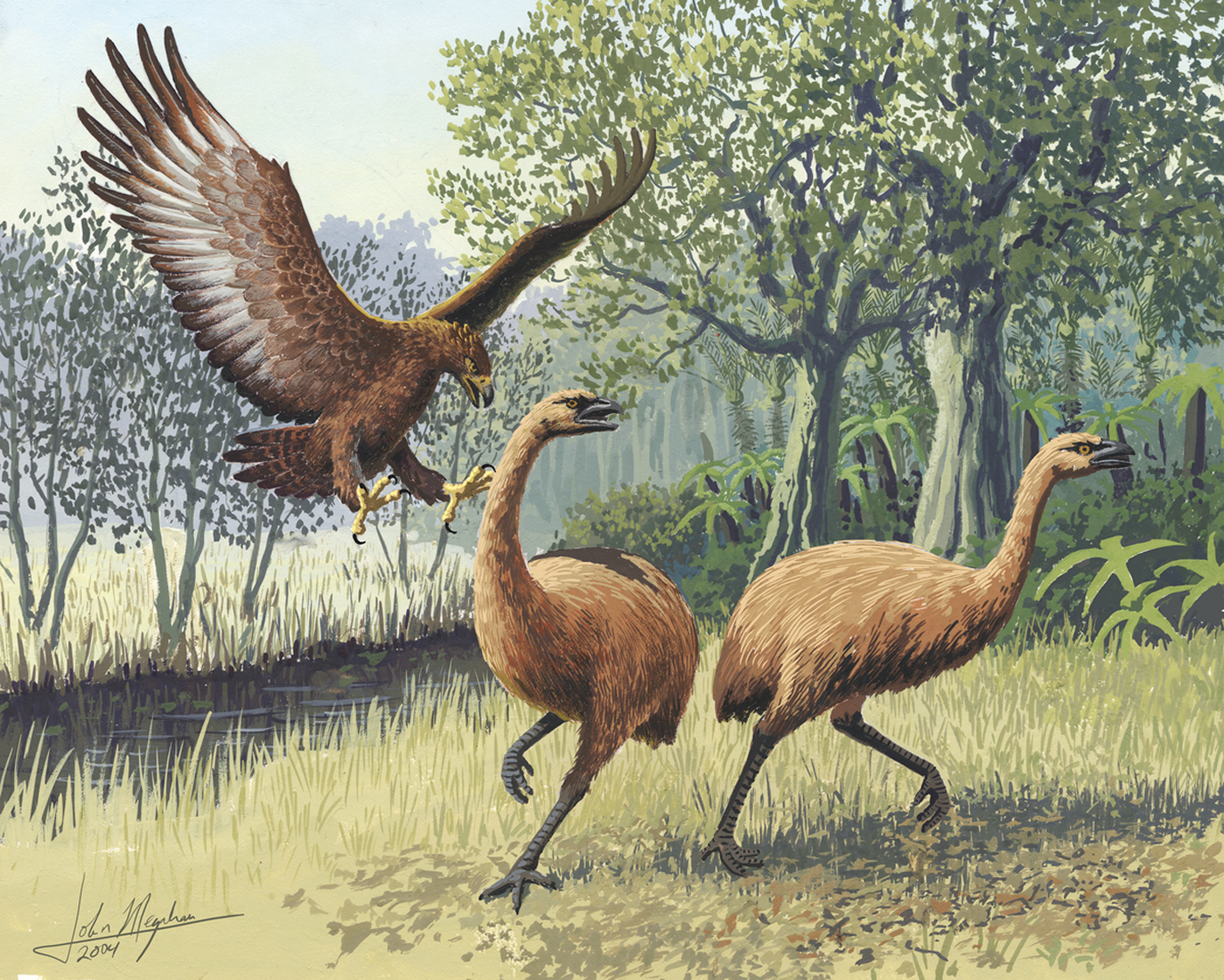Moa were large, plant-eating birds that once roamed the entirety of Aotearoa New Zealand. Currently, we know of nine described moa species, spread across six genera and three families.

Moa come in many shapes and sizes, which has been attributed to New Zealand’s geological history (for example, glaciations and tectonic movement), sexual dimorphism and differences in habitat, climate and diet.
This variability has made species identification contentious since European scientists first came across moa bones in the 1840s. The number of moa species was once overestimated to be in the high twenties and over time 64 different scientific names have been assigned to moa species.
The Coastal Moa (Euryapteryx curtus) is particularly interesting because its size changed drastically depending on the individual's gender and where it lived. Females could reach up to 1.5 metres tall, while the males were the size of a turkey. Males were responsible for egg incubation and therefore scientists think they evolved to be smaller so they were more inconspicuous to predators.

Coastal Moa from the upper North Island were also a lot smaller than those in the South Island and lower North Island. The photo to the left shows the tarsometatarsi (lower leg bones) of Coastal Moa collected from the South Island (left) compared to one from northern New Zealand (right).
This geographic size variation could be explained by the past existence of the Manawatu Strait, a body of water separating the North and South Islands which predates Cook Strait. Therefore, it has been advocated that smaller northern and larger southern Coastal Moa should be two different subspecies.
The evolution of moa is complex and not fully understood. Most of our knowledge has been obtained from specimens less than 10,000 years old which means we know very little about 99.9% of their evolution over 60 million years.
However, through DNA technology scientists have discovered that all the currently described moa species descend from a common ancestor that inhabited New Zealand around 3.5 million years ago. A number of significant glaciations occurred between then and the time moa went extinct, each time resulting in a bottleneck followed by an increase in the number of species. Land bridges would also form between islands when the sea level was low during glaciations, enabling moa to disperse and migrate throughout the country.





